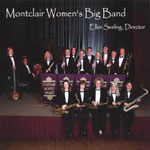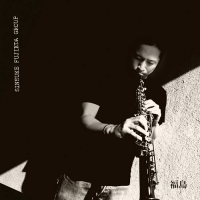Home » Jazz Articles » Album Review » Solomon Ilori And His Afro-Drum Ensemble: African High Life
Solomon Ilori And His Afro-Drum Ensemble: African High Life
The references to Africa in the two titles are purely coincidental. Gaynair's album was down-the-line, but massively on-fire and passionate hard bop. Tracks 7-9 on Ilori's album, on the other hand, anticipate—with great brio and deep grooves—the astral jazz of the late '60s and early '70s, and the world jazz which has in turn followed.
The Nigerian-born Ilori arrived in the US in the late '50s and recorded the first six tracks on this album—the original African High Life release—in 1963. They're pleasant, if unspectacular, palm-wine highlife outings from the West African tradition, distinguished by some masterful drumming, but diminished by strangely inept alto saxophone contributions. (Saxophonist Hosea Taylor is more convincing on flute, but even here, he's eclipsed by Ilori's pennywhistle, winningly showcased on the Irish sea shanty-derived "Follow Me To Africa.")
The separation between the drums isn't great on the recording, and there's too much tinny top on the call and response vocals—but traditional West African music wasn't engineer Rudy Van Gelder's main area of expertise, and recording technology in the early 1960s wasn't what it is today. By the time the final three tracks here were recorded, Van Gelder had it down more sympathetically.
Each of these three tunes runs approximately thirteen minutes and includes extended horn, traps and African drum solos. Elvin Jones' thrilling and uplifting interaction with the drum choir of Ilori, Chief Bey, Roger Sanders, Ladji Camara and Sonny Morgan is a feature of the mid-tempo groove of "Gbogbo Omo Ibilie" and the hotter and more intense "Agbamurero." Their dialogue continues on the cool-down closing tune, "Igbesi Aiye," which gets into some fine cross-rhythmic work.
Donald Byrd (trumpet) and Hubert Laws (tenor saxophone and flute) both contribute convincing modal solos to each tune, giving a taste of the aesthetic Pharoah Sanders and Alice Coltrane would develop later in the decade.
Ilori went on to work Harry Belafonte, Miriam Makeba and Hugh Masekela. It's taken forty years to release these latest tracks, but they're resoundingly well worth the wait.
Track Listing
Tolani (African Love Song); Ise Oluwa (God's Work Is Indestructible); Follow Me To Africa; Yaba E (Farewell); Jojolo (Look At This Beautiful Girl); Aiye Le (The Troubled World); Gbogbo Omo Ibile (Going Home); Agbamurero (Rhino); Igbesa Aiye (Song Of Praise To God).
Personnel
Tracks 1-6: Solomon Ilori: vocal, pennywhistle, talking drum, guitar (5); Chief Bey: conga; Josiah Ilori: sakara drum, cowbell; Robert Crowder: conga, shekere, cowbell; Montego Joe: conga; Garvin Masseaux: conga, xylophone, cowbell; Jay Berliner: guitar; Hosea Taylor: alto saxophone, flute; Ahmed Abdul-Malik: bass; Coleridge Perkinson: musical director. Tracks 7-9: Solomon Ilori: vocal, talking drum; Chief Bey, Roger Sanders, Ladji Camara, Sonny Morgan: congas, hand drums, percussion; Donald Byrd: trumpet; Hubert Laws: tenor saxophone, flute; Coleridge Perkinson: piano, musical director; Bob Cranshaw: bass; Elvin Jones: drums.
Album information
Title: African High Life | Year Released: 2006 | Record Label: Blue Note Records
Tags
PREVIOUS / NEXT
Support All About Jazz
 All About Jazz has been a pillar of jazz since 1995, championing it as an art form and, more importantly, supporting the musicians who make it. Our enduring commitment has made "AAJ" one of the most culturally important websites of its kind, read by hundreds of thousands of fans, musicians and industry figures every month.
All About Jazz has been a pillar of jazz since 1995, championing it as an art form and, more importantly, supporting the musicians who make it. Our enduring commitment has made "AAJ" one of the most culturally important websites of its kind, read by hundreds of thousands of fans, musicians and industry figures every month.




















